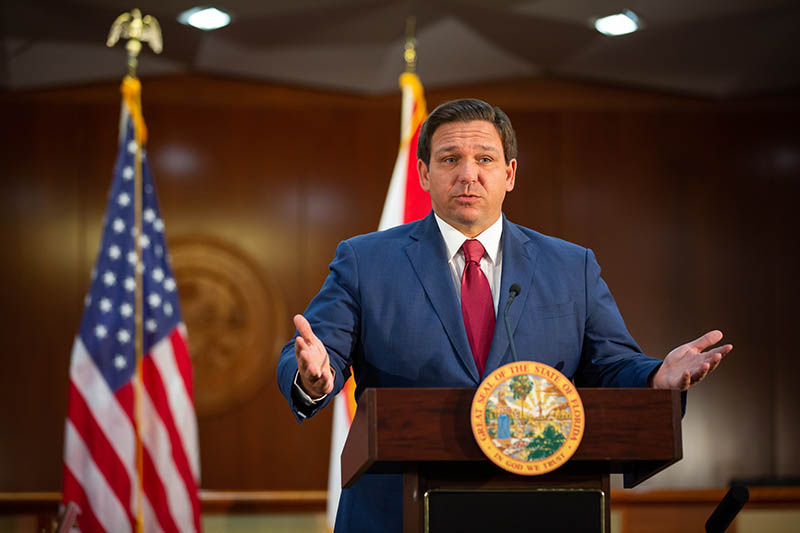
By Frank Giles
The Florida Legislature passed the largest budget on record during its 2022 session. The final tally came in at $110 billion. Lawmakers showed strong support for agriculture, passing several important bills. The Legislature allocated millions of dollars for the industry as well.
SB 1000
The most significant action was passage of SB 1000 Nutrient Application Rates. The legislation grew out of previous legislation to enhance the state’s Best Management Practices (BMP) Program, which is administered by the Florida Department of Agriculture and Consumers Services (FDACS). The voluntary program sets guidelines for nutrient management in various crops. More frequent verification inspections of farms and record collection was adopted by earlier legislation. This led to concerns among growers that the nutrient recommendations BMPs are based upon are outdated and not reflective of new science and production methods.
SB 1000 addresses those concerns. Specifically, for citrus growers it provides for customized fertilizer rate tailoring for specific citrus groves. These rate recommendations must be made by a 4R certified crop advisor. For citrus BMP participants, this will help growers stay in compliance with the program.
The University of Florida Institute of Food and Agricultural Sciences (UF/IFAS) sets the nutrient application recommendations that the FDACS BMP program is based upon. SB 1000 instructs the university to conduct new research to update fertilizer guidance for citrus and other specialty crops.
“It is going to be difficult for you to stay in business unless we refine our fertilizer rates,” Scott Angle, senior vice president of agriculture and natural resources and leader of UF/IFAS, said during a speaking engagement. “That is going to take a couple years. I wish we started five years ago, but we didn’t. That creates this conundrum of what to do in between that time. What do we do with these trees infected with HLB? This is not fast data. Sen. Ben Albritton (FL-56 District) is working on a mechanism (SB 1000) between today and the future when we have better recommendations.”
The bill also instructs UF/IFAS to conduct research for updated nutrient recommendations in other crops, including sweet corn, potatoes, green beans and tomatoes. The Legislature appropriated $8.7 million for this research, well above the $2 million originally requested.
MORE BILLS AND APPROPRIATIONS
Some other bills of note for Florida agriculture also passed during the 2022 session. Here’s a recap:
HB 909 – Pollution Control Standards and Liability: This bill preempts local governments and municipalities from creating overly stringent environmental site assessment requirements for agricultural landowners seeking a land-use change. It also places jurisdictional authority solely with the Florida Department of Environmental Protection.
HB 1186 – Agritourism: This bill includes language that prohibits denial or revocation of a property’s agricultural classification if it is engaged in agritourism.
SB 2508 – Environmental Resources: This bill protects South Florida’s water resources from federal overreach and preserves Florida’s sovereign ability to make its own decisions about how water resources are allocated across the state. The bill also ensures a balanced approach to the various needs within the system that will be impacted by the Lake Okeechobee Regulation Schedule.
In addition to the $8.7 million dedicated to updated fertilizer research, the state allocated funds to other important Florida agriculture sectors, including:
• Fresh From Florida promotion program – $18 million
• UF/IFAS Ecosystem Services Artificial Intelligence Tool – $2.2 million
• FDACS Agricultural BMPs – $33.5 million
• Lake Okeechobee Restoration Ag Projects – $5 million
• Lake Okeechobee Watershed Restoration Project – $350 million
• Citrus Research and Development Foundation (CRDF) Basic Research – $3 million
• CRDF Field Trials – $5 million
• Citrus Budwood Nursery – $2 million
• Citrus New Varieties Development Program – $650,000
• Citrus Advertising and Promotion – $17 million
“We cannot overstate the importance of appropriate funding for these areas — namely, UF/IFAS nutrient application research and the Fresh From Florida program,” said Mike Joyner, president of Florida Fruit & Vegetable Association. “In fact, it’s something the industry supports every year because of the important role they both play in ensuring our growers remain both viable and good stewards of the environment while growing food to help feed the nation.”









